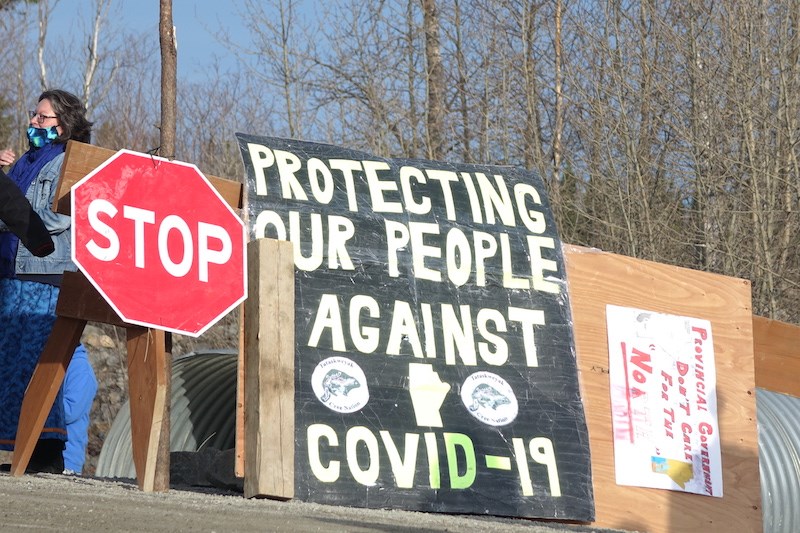It’s good news that Manitoba Hydro and its four First Nations partners in the construction of the Keeyask generating station in Northern Manitoba came to an agreement regarding plans to return to full staffing levels after a conference call May 23. The only unfortunate thing is the way that point was arrived at, with Tataskweyak Cree Nation (TCN) and the other partners - War Lake First Nation (WLFN), Fox Lake Cree Nation (FLCN) and York Factory First Nation (YFFN) - being forced to take drastic measures like blocking access roads and Manitoba Hydro responding with a court injunction that led to RCMP officers travelling up from Thompson May 20 to serve the court order to TCN Chief Doreen Spence in front of hundreds of onlookers who had gathered at a roadblock on Highway 280 to demonstrate solidarity.
From the outside looking in, it appears that Manitoba Hydro approached the planning of a return to full staffing levels backwards, leaving consultation with the area First Nations, who stand to lose a lot if COVID-19 makes its way into their communities, until after announcing plans. Thankfully, when push came to shove, the Crown corporation realized the error of its ways and CEO Jay Grewal had a conversation with the chiefs of TCN, WLFN, FLCN and YFFN that led to an amicable solution.
Thought Manitoba hasn’t been hit nearly as hard by the coronavirus pandemic as many other parts of Canada, it has resulted in concern, fear and even panic among some people, whether Indigenous or not. In the case of Northern Manitoba First Nations, the concern is heightened by what some of them experienced during the 2009 H1N1 flu pandemic, which sickened many people in some Indigenous communities, some of which were sent body bags as part of the federal government’s emergency response. Many remote and isolated First Nations, as well as those closer to urban communities, have overcrowded housing, minimal health care facilities and a high proportion of people with other medical conditions that make them more susceptible to contracting COVID-19 than the population at large. This reality is recognized by provincial public health officials, which is why a ban on non-essential travel into Northern Manitoba was put in place in mid-April. The fact that this doesn’t apply to people travelling for employment doesn’t mean that some of those people, particularly those coming from provinces like Quebec, where some Keeyask contractors live, don't pose a potential risk to people in nearby communities.
To be fair to Manitoba Hydro, their plan to increase staff levels, if not perfect, was at least fairly comprehensive, requiring out-of-province workers to self-isolate and test negative for COVID-19 prior to reporting to work, though it may have been lacking in oversight to ensure that workers really were self-isolating. What was more lacking, however, was communication. If the four First Nations in the area are truly considered partners in the Keeyask venture, they should have at least been consulted and given the opportunity to provide feedback on the company’s plan before it was made public. Even if it wasn’t, once the chiefs made their concerns public, a virtual meeting should have been scheduled as soon as possible to hear their concerns and ideas about how those concerns could be addressed. It should have never gotten to the point where there was even a possibility that one partner - Hydro - would seek a court order enabling police to arrest representatives of the other partners. That’s nobody’s idea of how a partnership should work. Once Manitoba Hydro’s CEO talked directly to the chiefs of the four First Nations, it didn’t take long to come to an agreement. That’s how a partnership should work.




